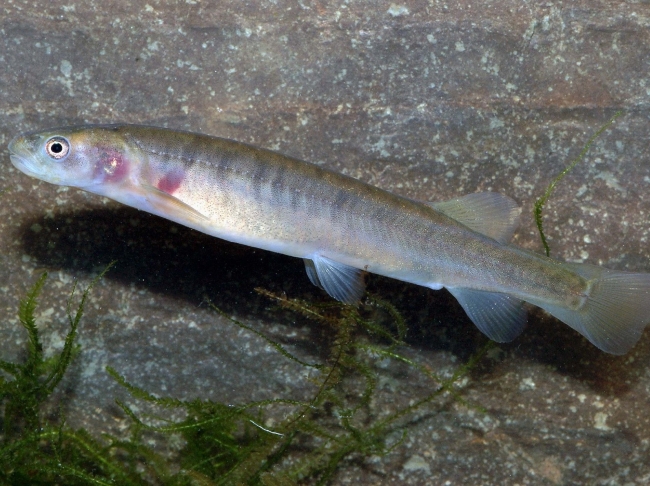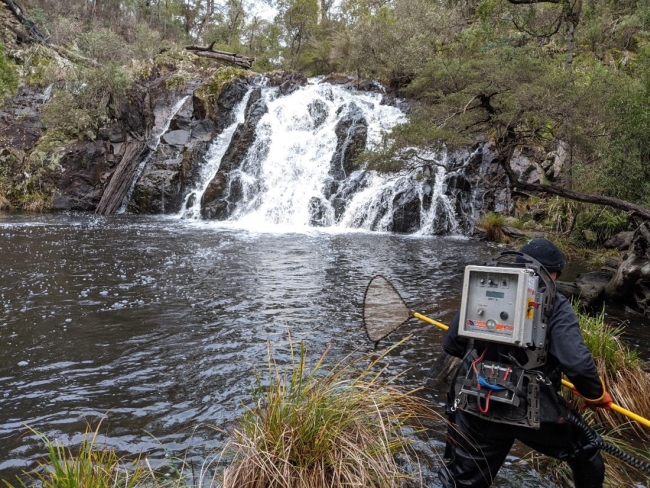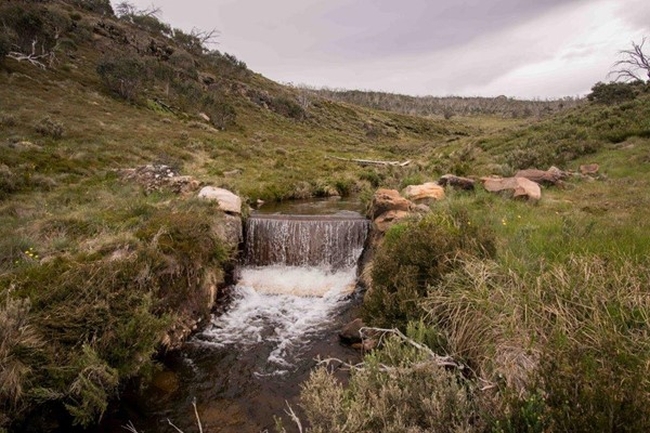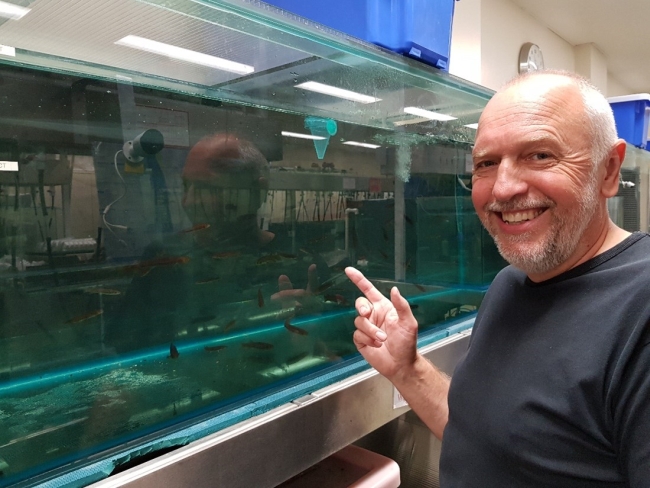Galaxiids are a family of small freshwater fish, restricted to the Southern Hemisphere and mostly found in southern Australia and New Zealand. Historically, species of this highly diverse family would have been the most abundant and widely distributed fish found in the cooler, southern parts of Australia. Most Victorian galaxiid species are now highly threatened, with very reduced and restricted distributions in headwater streams. Many galaxiid species now persist as only a single population.
For over 30 years, ARI’s research has supported galaxiid conservation. This has included: identifying new species; determining their distribution and abundance; assessing the impacts of threats and their status; undertaking actions to protect and restore populations; and providing advice on their conservation, particularly after bushfires.
Identifying species
Understanding the diversity of galaxiids is key to effective management. It helps clarify their conservation status and provides insights about threats and management needs . Until recently, only eight species of galaxiids were known in Victoria from three genera (Galaxias, Galaxiella and Neochanna). In 2014, 13 new species were identified after an extensive taxonomic and genetic study of one species, the Mountain Galaxias (Galaxias olidus).

This study, led by ARI’s Dr. Tarmo Raadik, revised research from 2001-2010 to reveal that Galaxias olidus was a complex of 15 species. ARI has since described a new species of Dwarf Galaxias, with a further five new species in the Galaxias olidus complex currently being described. Consequently, we now know of 24 galaxiid species in Victoria including 13 of which are endemic!
For more information, see the following publications:
- Raadik (2014) Fifteen from one: A revision of the Galaxias olidus Gunther 1866 complex (Teleostei, Galaxiidae) in south-eastern Australia recognises three previously described taxa and describes 12 new species. Zootaxa.
- Coleman, Hoffman and Raadik (2015) A review of Galaxiella pusilla (Mack) (Teleostei: Galaxiidae) in south-eastern Australia with a description of a new species. Zootaxa
- Lintermans et al. (2020) Big trouble for little fish: Identifying Australian Freshwater fishes in imminent risk of extinction. Pacific Conservation Biology.
Understanding distribution and abundance
Historically, our knowledge of the distribution and abundance of Victoria’s galaxiids has been limited. ARI’s early monitoring programs focused on the nationally threatened Barred Galaxias (Galaxias fuscus), found only in the Goulburn River system. This species became a flagship for galaxiid conservation, particularly after the 2009 Black Saturday Bushfires.
Over the last 20 years, ARI has led galaxiid monitoring in many regional and statewide programs. These include: Regional Forest

Agreement surveys; the National Estate program; Biodiversity Response Plans; the Forest Protection Survey Project; the Landscape Scale Biodiversity Project; and the Bushfire Recovery Program. Our enhanced understanding of the distribution and abundance of galaxiid species has been critical in the formal recognition and protection of these fish, in both state and national contexts.
Assessing and managing threats
Trout predation
Predation by Brown Trout and Rainbow Trout, species introduced into Australia, is a major threat for galaxiid species. Natural instream barriers, such as waterfalls, offer protection from trout by restricting their colonisation of upstream reaches. During large flow events such barriers can however be breached. The deliberate transport of trout into areas where threatened galaxiid species occur is also a concern.

The construction and modification of instream barriers, and the removal and relocation of trout downstream of barriers, are key methods to protect galaxiids. After many years of research, ARI has gained valuable insights regarding management options to best protect galaxiids from trout. For more information on this work see our Removing trout for barred galaxias conservation project page.
Climate change and extinction risk
Most galaxiid species exist within a single, small, isolated population and have specific habitat needs. These characteristics make them highly vulnerable to extinction, particularly from extreme events like fires, floods and drought. As the likelihood of extreme events increases with climate change, extinction risk needs to be managed. While habitat protection and restoration help to improve the distribution and abundance of galaxiid species, additional approaches are required. Translocating fish between sites within their known natural range can bolster the genetic diversity of populations (‘genetic top-up’ ). Captive breeding and releases into the wild can also help establish new galaxiid populations thereby spreading extinction risk across larger areas. ARI has developed effective techniques to breed and rear threatened galaxiids to guide these conservation strategies.
ARI and DELWP are working to: review best practices for translocation; identify what galaxiids need to persist into the future; better understand key threats and how these may change into the future; and assess the suitability of the range of management options to protect galaxiids.
For more information see the following publication:
- Stoessel et al. (2020) Captive breeding of two rare non-migratory galaxiids (Teleostei: Galaxiidae) for species conservation. Proceedings of the Royal Society of Victoria.
Emergency bushfire management
Following bushfires, rainfall events can wash ash, debris and sediment into waterways. This can suffocate and bury aquatic species including galaxiids. Several major, destructive bushfires have occurred in Victoria in the past 25 years. ARI has been involved in many aspects of Victoria’s bushfire emergency biodiversity response and recovery particularly following the Black Saturday (2009) and Black Summer (2019-20) bushfires. This has included: providing strategic advice on appropriate actions; reconnaissance of priority species and sites; emergency extractions; translocations;

pioneering ex-situ management; and the return of fish once conditions improved.
These efforts have helped protect individual populations and to prevent species’ extinctions. Visit the Bushfire response 2020 – Aquatic rescues project page for more information.
For further information on ARI’s work in protecting galaxiids, contact Tarmo.Raadik@delwp.vic.gov.au
Page last updated: 30/01/25